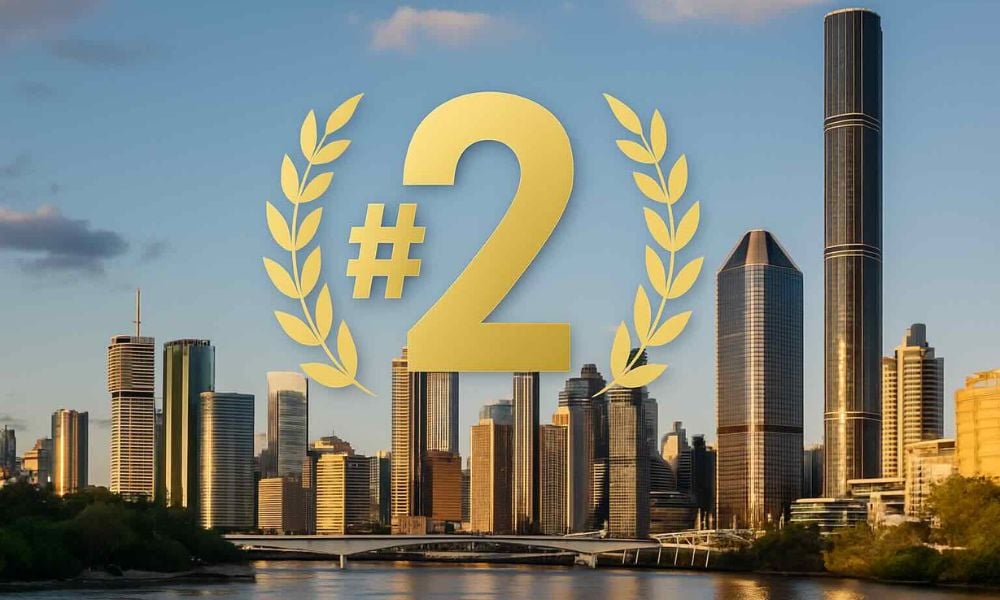And does paper score match on-the-ground reality?

Cost-of-living crisis? What cost-of-living crisis?
Brisbane, aka the River City, aka Brisvegas, ranks as the second-most cost-effective city in the world, according to Compare the Market’s Cost-of-Living Cities Index.
The Queensland capital edged out Madrid, Ankara and Victorian capital Melbourne thanks to 50c public transport fares, cheaper-than-average petrol prices, and a comparatively decent income-to-rent ratio.
Only South Korean capital Seoul bested Brisbane due to its nearly non-existent unemployment, low central bank interest rates and cheap electricity.
The accolade will surely come as little comfort to Brisbane’s denizens, who, like the rest of their fellow Australians, have been struggling with soaring inflation and an unattainable housing market.
Read more: Brisbane suburbs poised for property boom
But it’s a matter of “least-worst” when compared to other polled cities. Coming in last at 42nd place was Copenhagen, Denmark, where a simple coffee fetches an A$9.98 price tag and a loaf of bread comes in at nearly A$6.
In fact, not a single city scraped above 7/10 on the overall index score. Researchers looked at annual wages, utilities prices, staples (including bread and coffee), house prices, rents, and other metrics influencing living costs.
Dublin and Iceland’s capital Reykjavík were also near the bottom of the list, while Paris, Athens and New York were lumped around the middle of the table.
“No place is entirely perfect for those seeking cost-of-living relief,” said Compare the Market’s general manager of money, Stephen Zeller.
What makes Australian cities so awesome?
It’s not just with regards to cost effectiveness that we outperform – Australia is widely recognised as one of the best places in the world to live overall, with multiple cities ranking among the global elite in the Economist Intelligence Unit’s latest liveability index.
But even as the sun shines on its reputation, cracks are appearing — most notably around housing affordability, a growing point of concern that could erode the country’s edge.
Read more: Why Brisbane remains a property hot spot
Living well, but at a cost
Melbourne, long celebrated for its arts scene, food culture and leafy boulevards, continues to lead the pack with the EIU in the Asia-Pacific region, narrowly ahead of Sydney. But both cities slipped in global standings last year, a reflection of stubborn housing market pressures that have proven hard to shake despite cooling inflation.
The EIU’s annual index evaluates 173 cities across five pillars – stability, health care, culture and environment, education, and infrastructure – and Australian cities consistently excel, particularly in health and education, where they score top marks. Yet it is housing that’s beginning to drag on their overall performance, as escalating costs weigh on infrastructure scores.
“While Australian cities remain extremely liveable, the real issue is that liveability is becoming increasingly unevenly experienced,” urban policy analyst Simone Keating told The Economist. “If you can’t afford to live close to work or school, it hardly matters how good the roads or hospitals are.”
The burden of success
Australia’s liveability success story has a flip side. High rankings attract global talent and investment – and with them, more residents, more traffic, and more pressure on urban housing.
Sydney, where median house prices still hover above $1 million, and Melbourne, which isn’t far behind, have become symbols of a broader urban affordability crisis. Infrastructure has largely failed to keep pace with population growth, and while the quality of services remains high, access has become a challenge.
Even cities like Brisbane and Perth, which typically offer more affordable housing than their eastern cousins, have been swept up in the national trend of rent hikes and homebuyer competition. Still, all Australian cities assessed in the EIU index scored above 88 across all categories – a testament to their underlying strengths.
Asia-Pacific shifting
While Australia holds its ground, others in the region are climbing fast. Hong Kong posted the largest improvement globally, leaping 11 spots thanks to gains in health and stability – despite the political overhang of its controversial national security legislation. Meanwhile, Japanese cities like Osaka continue to rival Australia’s best on affordability, cleanliness and public transport integration.
But not all of Asia fared well. Cities like Karachi, Port Moresby and Dhaka continue to struggle near the bottom of the global ranking, hampered by inadequate infrastructure and overburdened health systems.
European strength, Middle Eastern fragility
The global top spot in this particular list again went to Vienna (35th in Compare the Market’s cost-effectiveness list), praised for its stability and public services – though the city fell short of a perfect score in culture and environment, oddly enough due to a lack of major sporting events.
At the other end of the spectrum, war-scarred Damascus remains the world’s least liveable city, according to the EIU. Kyiv, still impacted by the fallout of conflict, and Tel Aviv, shaken by regional unrest, also performed poorly in the latest survey. In fact, Tel Aviv’s drop of 20 places – to 112th – marked the most significant single-year fall, driven by declining scores in infrastructure and the environment amid ongoing tensions in Gaza.
A rising bar for quality of life
Globally, the average liveability score increased marginally – a far cry from the strong rebound seen post-COVID. Civil unrest in parts of Europe and economic pressures worldwide have flattened progress.
For Australia, the challenge ahead is not maintaining high scores in education or hospital access – but making sure they’re accessible to all. Without a coordinated push on housing, the nation’s enviable liveability could become an increasingly exclusive benefit, reserved for those able to keep up with the cost.
Or, as Keating put it, “A liveable city is not defined by how it scores on paper, but by whether its people can actually live there”.



